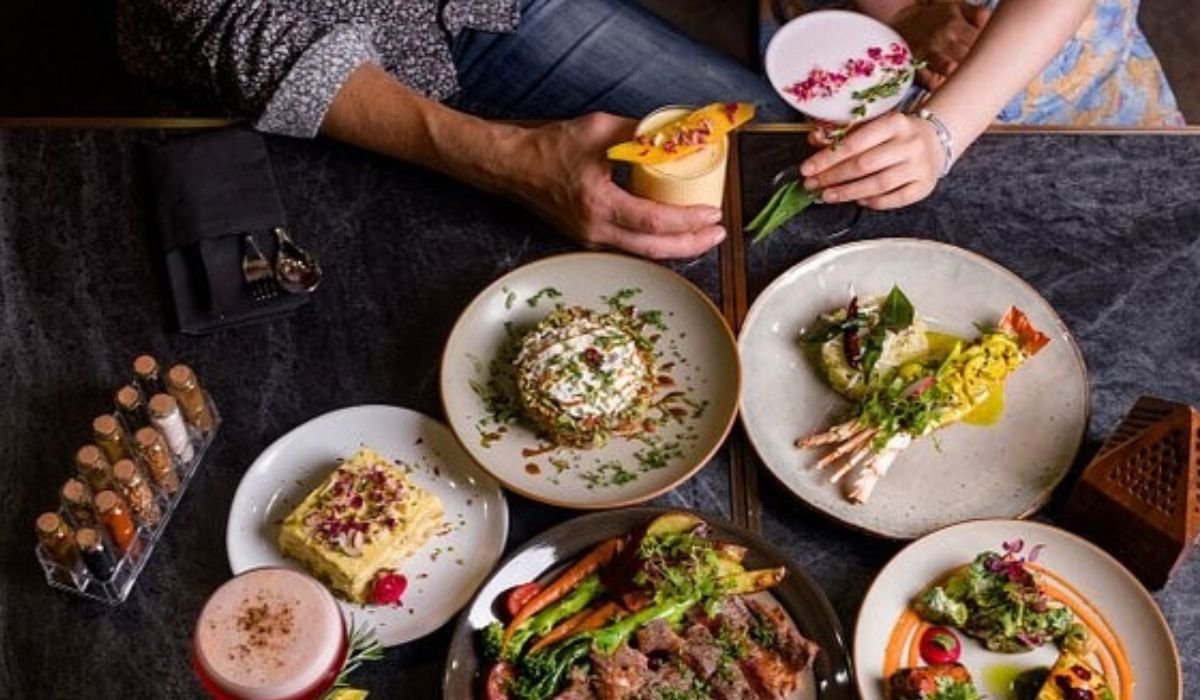Introduction
Çeciir is more than just a dish; it’s a symbol of Turkey’s rich culinary heritage. From humble beginnings to a staple in homes and restaurants, this beloved food carries with it a story that reflects the heart of Turkish culture. The name çeciir may not yet be familiar to everyone outside of Turkey, but for those who have tasted it, the memory lingers in both the mind and taste buds. The combination of unique ingredients, time-honoured cooking techniques, and cultural significance makes çeciir a dish worth exploring. In this article, we will delve deep into the roots of çeciir, its preparation, the best dishes it is featured in, and how you can enjoy this culinary wonder at home.
Understanding Çeciir: A Deeper Dive
Origins and Etymology
The origins of çeciir stretch back through the centuries, evolving alongside Turkish cuisine. The word çeciir itself is thought to come from an old Turkish term used to describe a nourishing and hearty dish. Originally made from simple, locally available ingredients, it quickly became a favourite due to its versatility and deep flavour profile. Over time, the dish has adapted, finding new forms in different regions of Turkey, but its core essence remains unchanged.
Cultural Significance
In Turkish households, çeciir holds a special place. It is often associated with family gatherings, festive occasions, and holidays. This dish is not just food—it’s a way to bring people together, to share in the warmth of hospitality that Turkey is famous for. Whether it’s a quiet dinner at home or a large celebration, çeciir often graces the table, symbolising abundance and togetherness. Its preparation is seen as an art, passed down through generations, and to this day, it remains a beloved tradition.
Regional Variations
While the basics of çeciir stay the same, different regions of Turkey add their own unique twist to the dish. In the coastal regions, you might find çeciir prepared with seafood or fish, while in central Anatolia, meat-based versions dominate. Each variation showcases the diverse agricultural and culinary resources of Turkey, making çeciir a dish that truly reflects the region in which it’s made.
The Art of Çeciir Preparation
Key Ingredients
The beauty of çeciir lies in its simplicity. At its core, it often consists of grains, legumes, vegetables, and sometimes meat or seafood. Depending on the region, you might find bulgur wheat, lentils, lamb, or freshly caught fish as the base ingredients. However, what truly makes çeciir stand out is the array of spices used to bring it to life. Common seasonings include cumin, paprika, sumac, and mint, each adding layers of flavour to create a balanced and satisfying meal.
Cooking Techniques
Çeciir is traditionally slow-cooked to allow the ingredients to blend harmoniously. This process usually takes place over low heat, whether on a stove or in a traditional Turkish clay oven. In many cases, the dish is allowed to simmer for hours, which deepens the flavours and ensures that every bite is tender and full of rich taste. While modern interpretations may speed up the cooking process, the slow and steady approach remains the best way to achieve authentic results.
Flavor Profiles
When you taste çeciir, you’re greeted with a rich and earthy flavour that speaks to the freshness of the ingredients and the care taken in its preparation. The combination of sweet, spicy, and savoury elements makes this dish truly stand out. Depending on the ingredients used, you may get hints of smokiness from the meat, a subtle tang from citrus or sumac, or the warmth of spices like cumin and paprika.
Iconic Çeciir Dishes
Classic Çeciir
Among the most well-known versions of çeciir is the lentil and bulgur variety, often enjoyed with a side of yogurt and fresh pita bread. This dish is a true testament to the power of simple, wholesome ingredients. Another classic is the meat-based çeciir, usually prepared with lamb or beef, slow-cooked with a variety of vegetables and herbs to create a deeply satisfying meal.
Regional Specialties
In some regions, çeciir takes on a seafood focus, particularly in coastal areas where the proximity to the sea provides an abundance of fresh fish. These variations might include grilled fish or shrimp, with the grains or legumes serving as a hearty base. In contrast, inland regions favour lamb or chicken-based versions, often spiced with herbs and cooked slowly to perfection.
Modern Interpretations
As Turkish cuisine continues to evolve, chefs are creating modern takes on traditional çeciir dishes. Some might swap out bulgur for quinoa or introduce ingredients like avocado or roasted peppers. These contemporary interpretations maintain the heart of the dish while bringing new flavours and textures to the table.
Çeciir: A Culinary Experience
Texture and Aroma
One of the defining features of çeciir is its texture. Depending on the preparation, it can range from creamy and smooth to chunky and hearty. The aroma is another essential element, as the spices used in the dish fill the kitchen with warmth and inviting fragrances, heightening the anticipation before the first bite.
Pairing with Other Dishes
Çeciir pairs well with a variety of side dishes. Traditionally, it’s served with yogurt, freshly baked bread, or a side salad. The contrast between the rich, warm flavours of çeciir and the coolness of yogurt or crisp vegetables creates a perfectly balanced meal.
Cultural Significance
Beyond its role as a delicious meal, çeciir serves as a reflection of Turkish society, where food is often used as a way to connect with family, friends, and even strangers. Çeciir represents the spirit of hospitality and is a symbol of Turkey’s culinary pride.
Çeciir at Home: A Culinary Adventure
Recipes
Making çeciir at home can be an adventure. A simple recipe might include bulgur wheat, lentils, onions, tomatoes, and cumin, simmered together until soft and fragrant. For those who prefer a meatier option, adding lamb or chicken can give the dish more depth.
Cooking Tips
The key to perfect çeciir is patience. Slow cooking over low heat ensures that the flavours have time to develop fully. Make sure to season the dish early and adjust the spices as needed. For extra flavour, use homemade stock instead of water, and don’t be afraid to experiment with different herbs and spices.
Ingredient Substitutions
If you can’t find traditional Turkish ingredients, substitutions can be made. Quinoa can replace bulgur, and if lamb is not available, beef or chicken works well. You can also experiment with different types of lentils or even add vegetables like zucchini or eggplant for a unique twist.
The Future of Çeciir: Preserving Tradition
Challenges and Opportunities
As the world changes, so does food. The challenge for çeciir lies in preserving its traditional roots while adapting to modern tastes and dietary preferences. However, there are also opportunities to introduce this dish to global audiences, sharing the rich history of Turkish cuisine with the world.
Preservation Efforts
Many chefs and food enthusiasts in Turkey are working hard to preserve çeciir recipes, passing them down through generations. Efforts to keep this dish alive in its traditional form are ongoing, with cooking schools and home cooks alike playing a crucial role.
Global Appreciation
As Turkish cuisine gains popularity outside of Turkey, more people are discovering the delights of çeciir. With its simple ingredients and rich flavours, it’s no surprise that this dish is gaining international recognition and becoming a favourite for food lovers worldwide.
You May Also Like: Soymamicoco: The Superfood Revolutionizing Healthy Eating
Conclusion
In conclusion, çeciir is more than just a meal—it’s a representation of Turkish culture, history, and culinary art. Its unique flavours, traditional preparation methods, and cultural significance make it a dish worth celebrating and preserving for future generations. Whether enjoyed in its traditional form or with a modern twist, çeciir continues to captivate the hearts and taste buds of those who experience it.
FAQs
1. What is çeciir?
Çeciir is a traditional Turkish dish made from grains, legumes, and sometimes meat or seafood. It is seasoned with a variety of spices and slow-cooked to create a rich and hearty meal.
2. What are the key ingredients in çeciir?
The key ingredients in çeciir typically include bulgur wheat, lentils, onions, tomatoes, and spices such as cumin and paprika. Depending on the regional variation, it may also include meat, fish, or vegetables.
3. Is çeciir gluten-free?
Traditional çeciir made with bulgur wheat is not gluten-free. However, you can make a gluten-free version by substituting quinoa or another grain.
4. How do you serve çeciir?
Çeciir is typically served with yogurt, bread, and sometimes a side salad. It pairs well with both meat-based and vegetarian dishes.
5. Can çeciir be made vegetarian or vegan?
Yes, çeciir can easily be made vegetarian or vegan by omitting the meat and using legumes like chickpeas or lentils as the primary source of protein.










